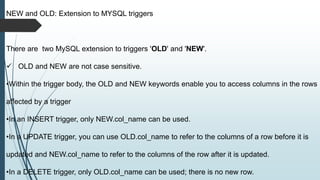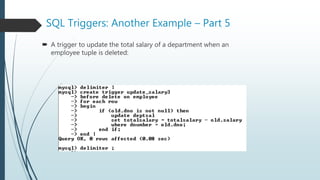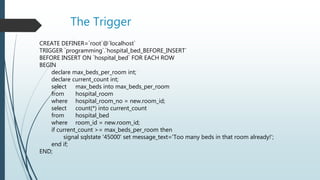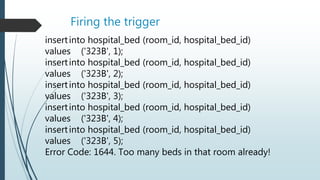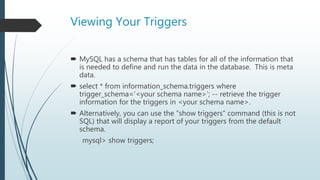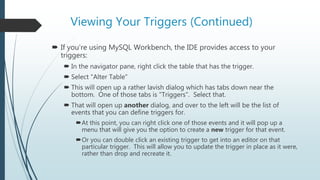MySQL triggers allow stored programs to be automatically invoked in response to data changes, such as inserts, updates or deletes, on a table. Triggers can be used to monitor tables and take corrective actions when conditions occur. For example, a trigger could update the total salary of a department when a new employee is inserted into the employees table.

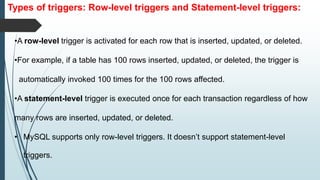
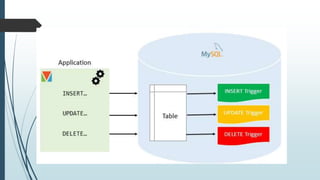

![Triggers
CREATE
[DEFINER = { user | CURRENT_USER }]
TRIGGER trigger_name
trigger_time trigger_event
ON tbl_name FOR EACH ROW
[trigger_order]
trigger_body
trigger_time: { BEFORE | AFTER }
trigger_event: { INSERT | UPDATE | DELETE }
trigger_order: { FOLLOWS | PRECEDES } other_trigger_name](https://image.slidesharecdn.com/triggerinmysql-200502104202/85/Trigger-in-mysql-5-320.jpg)



